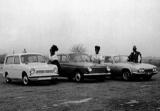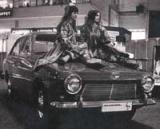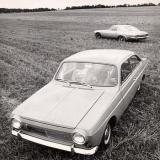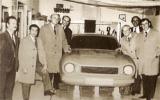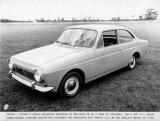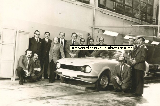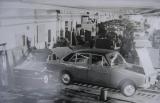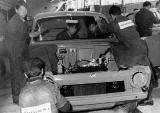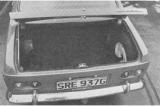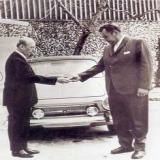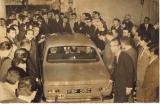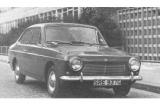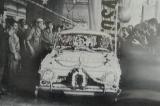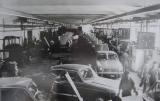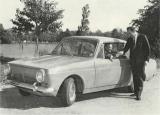Search
Gallery
| P2 Otosan 500 and Otosan 600D |
|
Initial studies for pick-ups started in 1970. The idea came up by modifying an Anadol car to a pick-up like vehicule to transport the equipments within the factory. Bernard Nahum, the partner, has seen this vehicule in the factory and came up with this pick-up idea. The increasing demand for the light transport together with the economical developments in Turkey and the increasing trend of domestic trade in the 70’s, were the strong points of this idea. Otosan engineers started to the body design works in the fiber workshop. The first prototype was fiber body (cabin and trunk) pick-up. Then, the last version appeared with fiber cabin and steel trunk. The production of pick-ups, Otosan 500 (code P2) began in 1971. Powered by 54 HP (5500 rpm) 1298cc Ford Kent Crossflow OHV cast iron block engine, the appearance of the body was the same as A1 MkI. Lucas” spherical head lamps with spherical signal lights and metal grille (from 1971/01 to 1975/12) have been placed at front and hexagonal signal and stop lights at rear. Nickel-plated bumper was only at front. On the dashboard, there were placed two Smiths gauges: on the left a speedometer and on the right another gauge with water temperature and fuel indicators. The 3-seat cabin is built from fibre glass and affixed to an H-frame A1 chassis. The chassis has independent front suspension utilising coil springs and strong leaf springs on a live axle for the rear. Brake system is mono hyrolic system with disc in the front and drum in the rear. Hand brake, replaced at the left of one piece cabin seat, is mechanical and brake lever connected by a cable to another lever at rear axle. Cluch system is cable. Gear box with cast iron block, is Ford type 2 model with manual transmission. Steering system is rack and pinion. By 1976, the appearance of the body has been changed and the cabin style became SL shape. The two round headlamps at front were replaced with rectangular shape headlamps and signals were at the out-sides of the headlamps. The bumpers and the front grille (from fibre) design were changed (SL) and a new transmission system was introduced. This style has been kept from 1976/01 until late of 80’s. From 1980/01 to 1981/12, together with the 54 HP (5500 rpm) 1298cc Ford Kent CrossflowOHV cast iron block engine, 49 HP (4500 rpm) 1200cc Ford ERK diesel engine has been applied. Starting from 1982/01, Otosan 500 pick-ups have been powered by 1600 cc Ford Pinto SOHC engine, with double throttle Weber carburetor, that would be used later on with the Ford Taunus (Cortina) production after the cease of Anadol production. Cabin design has kept the same style. The later version appeared in 1987/01 and a new engine has been applied. This engine was 58 HP (4500 rpm) 4 cylinders, straight, 1881cc ERK diesel SOHC engine developed by Otosan. Interior of the cabin has been renewed and materials used have been upgrated. On the dashboard, Smiths gauges have been replaced by Endiksan, domestic production. The bonnet had a small swelling form. The style of the grille, made of fiber, has been renewed. Steering wheel had a new form.Anadol pick-ups, with some small changes, stayed on line for 20 years, from 1971/01 to 1991/01 and 36.892 pick-ups have been produced. Due to the solidity, incorruptibility, low maintenance cost, full chassis, strong and long lasting engine of the car, the demand for Anadol pick-ups came up to such a level that the people started to buy and collect A1 and A2 passenger cars and transform them to pick-ups by cutting the body. Unfortunately, thousands of Anadol cars have been lost during this period.
View the embedded image gallery online at:
https://anadolturkey.com/web/en/models/p2.html#sigFreeId38197a9426 |













